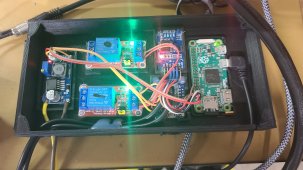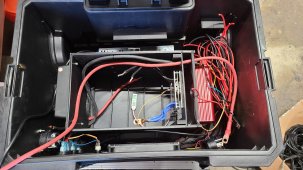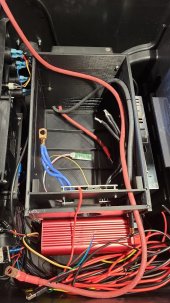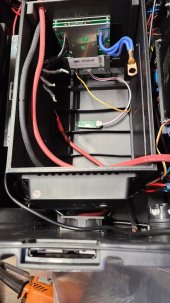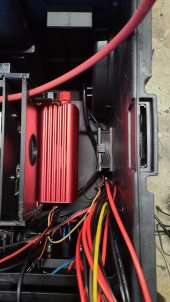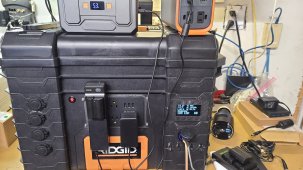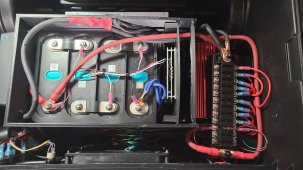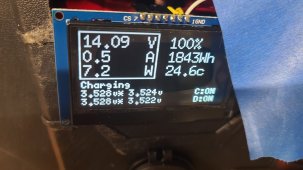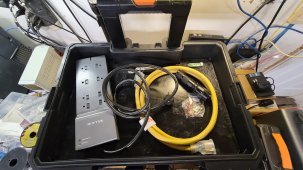hpservertech
New Member
- Joined
- Mar 8, 2022
- Messages
- 47
Quick update.
Cells have arrived!
Decided to move up to a Meanwell 24v 340w power supply instead of the 12v. Ronogy can handle up to 25v so I will adjust it down to 21.
Have a lighted latching push button that I will test when the cells are charged. There is a spot on the BMS for it.
Been fighting with the 3d printer the past couple days. That blue material was just crap. Switched over to a different spool and it's printing perfectly now. Have about 18 hours left for the main case.
Made some adjustments to the case. Made it a little more modular so upgrading cells shouldn't be an issue in the future. Also made it shorter and moved the BMS to the right side instead of the top.
Other parts are being printed also. Some are completed and some will get redone after some adjustments.
Got one of the fans installed, waiting for a fan guard for the other.
Have it all hooked up on the bench. BMS is working as I expected and the power monitor is working as well. Need to get some 10ga or 8ga for some of the wiring, but I expected that. Have 4ga for the main power wires and plenty of 12ga for all the outlets.
I'll try to get some new pictures tomorrow once a few more things get printed.
Cells have arrived!
Decided to move up to a Meanwell 24v 340w power supply instead of the 12v. Ronogy can handle up to 25v so I will adjust it down to 21.
Have a lighted latching push button that I will test when the cells are charged. There is a spot on the BMS for it.
Been fighting with the 3d printer the past couple days. That blue material was just crap. Switched over to a different spool and it's printing perfectly now. Have about 18 hours left for the main case.
Made some adjustments to the case. Made it a little more modular so upgrading cells shouldn't be an issue in the future. Also made it shorter and moved the BMS to the right side instead of the top.
Other parts are being printed also. Some are completed and some will get redone after some adjustments.
Got one of the fans installed, waiting for a fan guard for the other.
Have it all hooked up on the bench. BMS is working as I expected and the power monitor is working as well. Need to get some 10ga or 8ga for some of the wiring, but I expected that. Have 4ga for the main power wires and plenty of 12ga for all the outlets.
I'll try to get some new pictures tomorrow once a few more things get printed.



